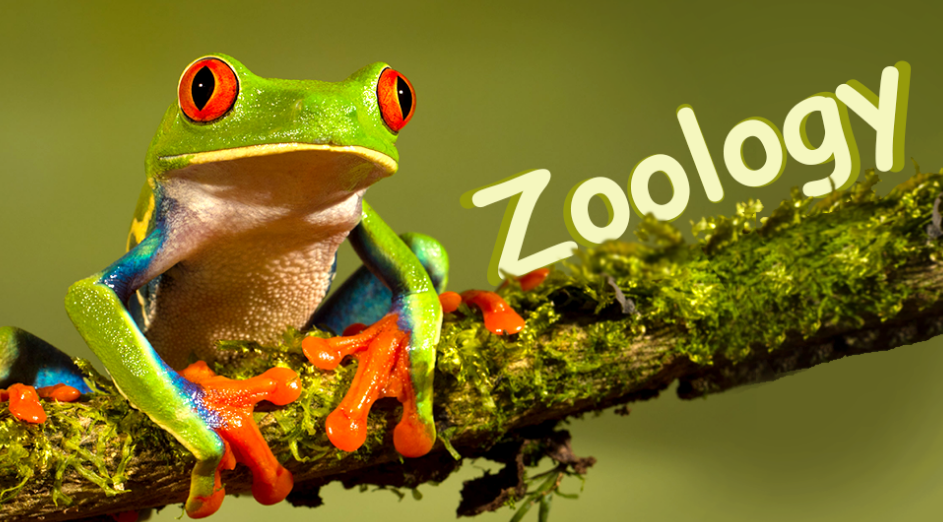The culture of freshwater prawns and shrimps is an important sector in global aquaculture, providing a valuable source of protein and income, especially in tropical and subtropical regions. Freshwater prawns (e.g., Macrobrachium rosenbergii) and shrimps (e.g., Penaeus vannamei) are cultivated using a variety of farming systems, depending on local environmental conditions and market demands. Below is a detailed overview of their cultivation.
1. Freshwater Prawn (Macrobrachium rosenbergii) Culture
Species Overview:
Scientific Name: Macrobrachium rosenbergii, commonly known as the giant river prawn.
Habitat: Freshwater or slightly brackish waters in tropical and subtropical regions.
Geographical Distribution: Native to South and Southeast Asia but cultured in many parts of the world, including Latin America and Africa.
Lifespan: Prawns can grow to a large size (over 30 cm) and are typically cultured for about 6–9 months.
Cultivation Techniques:
Hatchery Phase:
Broodstock Selection: Healthy, mature prawns are selected as broodstock. Males and females are kept in separate tanks until the females spawn. Females carrying fertilized eggs are then moved to hatching tanks.
Larval Rearing: After hatching, larvae are reared in brackish water (salinity of around 12–15 ppt). The larvae go through several stages before reaching the post-larval stage, which takes about 20–30 days.
Feeding: Larvae are fed a diet of microalgae, Artemia (brine shrimp), and formulated feeds rich in nutrients.
Grow-out Phase:
Pond Culture: Prawns are typically raised in earthen ponds, usually ranging from 0.5 to 1.5 hectares in size.
Stocking: Post-larvae (PL) are stocked in ponds at densities of 4–6 prawns per square meter, though stocking densities can vary depending on management practices and pond conditions.
Water Management: Freshwater prawns require clean water with good dissolved oxygen levels. Water exchange and aeration are essential, especially in intensive systems.
Feeding: Prawns are omnivores and are fed with pelleted commercial feeds that contain proteins, carbohydrates, fats, vitamins, and minerals. Supplemental feeds like agricultural byproducts or kitchen waste can also be provided.
Harvesting: Prawns can be harvested at 6–9 months when they reach a marketable size (25–40 grams). They are either harvested by draining the pond or through partial harvesting, where larger prawns are selectively removed.
Polyculture with Fish:
Freshwater prawns are often cultured in polyculture systems with fish species such as tilapia or carp. The prawns occupy the pond bottom, while fish utilize the water column, maximizing pond productivity.
Benefits:
High Market Value: Freshwater prawns are valued for their size and taste, fetching good prices in local and international markets.
Diversification: Integrating prawns with fish (polyculture) allows farmers to diversify their income.
Ecological Sustainability: Prawn farming can be environmentally sustainable if properly managed, as prawns can feed on natural productivity in ponds and help improve sediment quality by burrowing into the pond bottom.
Challenges:
Disease Management: Prawns are vulnerable to bacterial infections, parasites, and viruses. Preventive measures like maintaining water quality and biosecurity are crucial.
Labor-Intensive: Prawn culture can require more labor for pond preparation, stocking, feeding, and harvesting compared to some fish species.
2. Freshwater Shrimp (Penaeus vannamei) Culture
Species Overview:
Scientific Name: Penaeus vannamei, also known as whiteleg shrimp or Pacific white shrimp.
Habitat: Although primarily a marine species, P. vannamei can tolerate a wide range of salinities and is often cultured in brackish water or even low-salinity freshwater systems.
Geographical Distribution: Native to the Pacific coast of Central and South America, but widely farmed across the world, particularly in Asia and Latin America.
Cultivation Techniques:
Hatchery Phase:
Broodstock Management: Selected broodstock (usually specific pathogen-free, SPF) are kept in tanks and conditioned to spawn. Females carrying fertilized eggs are transferred to hatching tanks.
Larval Rearing: The larvae are reared in brackish water at salinities between 10 and 30 ppt, progressing through several stages (nauplii, zoea, mysis) before becoming post-larvae.
Feeding: Similar to freshwater prawns, the larvae are fed microalgae, Artemia nauplii, and formulated diets.
Grow-out Phase:
Pond Culture: Shrimp are typically grown in earthen or lined ponds. Pond sizes can range from small (0.2 hectares) to large-scale operations (up to 10 hectares or more). The water salinity is maintained between 1–15 ppt in low-salinity systems.
Stocking: Post-larvae (PL) are stocked at densities between 10 and 50 shrimp per square meter, depending on the intensity of the farming system (extensive, semi-intensive, or intensive).
Water Quality Management: Water exchange, aeration, and monitoring of dissolved oxygen, ammonia, and other parameters are critical for shrimp health and growth.
Feeding: Shrimp are fed high-protein commercial feeds, and their diet is adjusted as they grow. In low-salinity or freshwater systems, additional supplements might be added to ensure proper mineral balance.
Harvesting: Whiteleg shrimp grow quickly and can be harvested in 3–6 months. Harvesting can be done by draining the pond or using seines (large nets) to collect the shrimp.
Recirculating Aquaculture Systems (RAS):
In some cases, shrimp are cultured in closed, land-based systems known as Recirculating Aquaculture Systems (RAS), where water is filtered and reused. This provides better control over environmental conditions and reduces water use.
Benefits:
Fast Growth and High Yield: Penaeus vannamei has a fast growth rate, and intensive farming can yield high production.
Wide Tolerance to Salinity: The species can be grown in a range of salinities, making it adaptable to both brackish and freshwater systems.
Global Market Demand: Whiteleg shrimp are highly in demand globally, making shrimp farming a profitable venture for farmers.
Challenges:
Disease Outbreaks: Shrimp farming is prone to diseases such as white spot syndrome virus (WSSV) and early mortality syndrome (EMS), which can cause significant losses.
High Input Costs: Intensive shrimp farming requires significant investments in feed, water management, and disease prevention.
3. Comparing Prawn and Shrimp Culture
Aspect Freshwater Prawns (M. rosenbergii) Freshwater Shrimps (P. vannamei)
Salinity Tolerance Freshwater, slight brackish tolerance Broad salinity range, tolerates brackish water
Growth Rate Slower, takes 6–9 months Faster, can be harvested in 3–6 months
Stocking Density Lower (4–6 per m²) Higher (10–50 per m²) depending on system
Market Size Larger size, more niche market Smaller, mass market
Disease Risk Moderately susceptible to diseases Highly susceptible to viral diseases
Polyculture Potential High (often cultured with fish) Typically monoculture
June 6, 2025
- A Cross-Sectional Study on the Prevalence of Salmonella inRaw Milk in Tandojam and Surrounding Areas, Pakistan
- Consequence of biotin as a nourish preservative on thedevelopment of Gallus gallus domesticus
- STUDY ON THE ISOLATION AND IDENTIFICATION OF ASCARIS LUMBRICOIDES FROM SINDH, PAKISTAN.
- IN VITRO DIGESTIBILITY OF SELECTED FORAGES IN SARGODHADISTRICT, PAKISTAN




Il nostro servizio offre l’assunzione di lavoratori per attività a rischio.
Gli utenti possono selezionare operatori competenti per lavori una tantum.
Tutti i lavoratori sono valutati con cura.
ordina omicidio
Attraverso il portale è possibile consultare disponibilità prima di procedere.
La sicurezza continua a essere la nostra priorità.
Iniziate la ricerca oggi stesso per trovare il supporto necessario!
Here, you can find a great variety of slot machines from top providers.
Users can try out traditional machines as well as feature-packed games with high-quality visuals and bonus rounds.
If you’re just starting out or an experienced player, there’s a game that fits your style.
play bonanza
All slot machines are ready to play anytime and optimized for PCs and tablets alike.
All games run in your browser, so you can start playing instantly.
Platform layout is intuitive, making it convenient to find your favorite slot.
Sign up today, and discover the world of online slots!
本网站 提供 海量的 成人内容,满足 成年访客 的 需求。
无论您喜欢 什么样的 的 内容,这里都 种类齐全。
所有 内容 都经过 严格审核,确保 高清晰 的 观看体验。
性别
我们支持 不同平台 访问,包括 平板,随时随地 自由浏览。
加入我们,探索 激情时刻 的 私密乐趣。
The AP Royal Oak 15400ST combines luxury steel craftsmanship introduced in 2012 of the legendary Royal Oak collection.
The watch’s 41mm steel case is framed by an angular bezel highlighted by eight bold screws, defining its sporty-chic identity.
Driven by the self-winding Cal. 3120, it ensures precise timekeeping featuring a practical date window.
Piguet Royal Oak 15400ST
A sleek silver index dial with Grande Tapisserie enhanced by luminescent markers for clear visibility.
Its matching steel bracelet offers a secure, ergonomic fit, secured by a hidden clasp.
Celebrated for its high recognition value, it continues to captivate collectors among luxury watch enthusiasts.
Audemars Piguet’s Royal Oak 15450ST boasts a
slim 9.8mm profile and 5 ATM water resistance, blending luxury craftsmanship
Its silvery-grey Grande Tapisserie dial includes applied 18k white gold markers and a glareproofed sapphire crystal, ensuring legibility and resilience.
Powered by the selfwinding caliber 3120, it offers a reliable 60-hour reserve for uninterrupted precision.
Introduced in the early 2010s, the 15450ST complements the larger 41mm 15400 model, catering to classic proportions.
The vintage-inspired 2019 edition highlights meticulous craftsmanship, appealing to collectors.
Audemars Piguet 15450ST
A sleek silver index dial with Grande Tapisserie enhanced by luminescent markers for clear visibility.
Its matching steel bracelet combines elegance with resilience, secured by a hidden clasp.
Celebrated for its high recognition value, the 15400ST stands as a pinnacle in the world of haute horology.
The Audemars Piguet Royal Oak 16202ST features a elegant stainless steel 39mm case with an ultra-thin profile of just 8.1mm thickness, housing the latest selfwinding Calibre 7121. Its mesmerizing smoked blue gradient dial showcases a signature Petite Tapisserie pattern, fading from a radiant center to dark periphery for a captivating aesthetic. The iconic eight-screw octagonal bezel pays homage to the original 1972 design, while the glareproofed sapphire crystal ensures optimal legibility.
https://graph.org/Audemars-Piguet-Royal-Oak-16202st-A-Legacy-Wrought-in-Steel-06-02
Water-resistant to 5 ATM, this “Jumbo” model balances robust performance with luxurious refinement, paired with a steel link strap and reliable folding buckle. A modern tribute to horological heritage, the 16202ST embodies Audemars Piguet’s craftsmanship through its meticulous mechanics and timeless Royal Oak DNA.
¿Necesitas cupones exclusivos de 1xBet? Aquí podrás obtener las mejores ofertas para tus jugadas.
El promocódigo 1x_12121 ofrece a hasta 6500₽ durante el registro .
Para completar, utiliza 1XRUN200 y disfruta hasta 32,500₽ .
https://tvsocialnews.com/story5182318/activa-tu-c%C3%B3digo-promocional-1xbet-y-gana-en-grande
Mantente atento las novedades para ganar ventajas exclusivas.
Todos los códigos funcionan al 100% para hoy .
¡Aprovecha y multiplica tus ganancias con la casa de apuestas líder !